火星 ALPO-Japan Latest

Mars Image 2018/12/11(UT)
Clyde Foster,Pericles Enache,Paul G. Abel,Simon Kidd,Mike Hood
C.Foster,P.Enache,P.Abel,S.Kidd,M.Hood
解説(安達)/ Comment by Makoto Adachi
Clyde Foster氏が記録されたSPC上部の青い光は、画像処理の過程でできたものと思われる。SPCが明るく処理されていることや、
SPCの北側にあるものと南北対象の関係にあることが理由の一つだ。
この画像からはArsia Monsに白雲が広がっている。線状にはなっておらず、普通の山岳雲と思われる。
The blue light above the SPC where Mr. Clyde Foster was recorded seems to have been made in the process of image processing.
One of the reasons is that the SPC is brightly processed and that it is in a relationship between the north and south targets on
the north side of the SPC.Blue clouds are spreading from this image to Arsia Mons. It is not linear but seems to be an orographic cloud.
(by 5 observations ;reported by Makoto Adachi)
-------------------------------------------------------------------------------------
A rather interesting data set from yesterday evening,where I had some reasonable seeing conditions.
In particular the G and B data was quite pleasing.
The final images are from two sets of RGB data which have been derotated over a total period of +-8mins.
- Quite extensive cloud is seen over Tharsis,with a bright concentration over Arsia Mons(B image).
I am not sure if this is a remnant of the linear cloud that has been seen and monitored over the last few months.
- Olympus Mons is seen at lower right in early morning conditions. Its dark western flank is seen close to the terminator.
- However,what was of particular interest to me was the region around the SPC,
where there is what appears to be a Blue/Green cloud possibly extending beyond the limb.
This is enhanced/exacerbated by the fact that this limb area is dark in R. But the G and B data does appear to show it quite clearly.
I have not seen anything like this in my recent images,and the fact that the B and G data is fairly good possibly adds some credence.
However,pending further observations or confirmation,there is off course the possibility that it could be an artefact,
given my current processing skills. Any comments would be welcome.
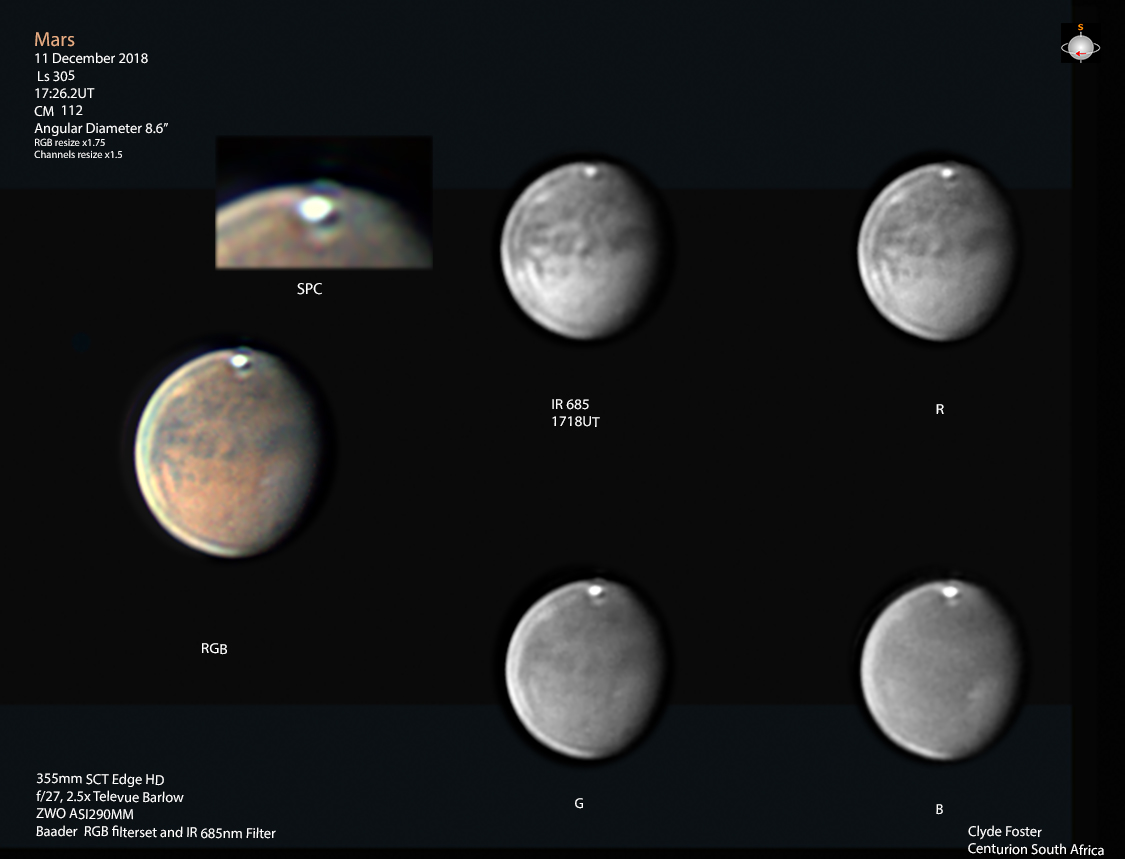 [Clyde Foster:Centurion,South Africa]
[Clyde Foster:Centurion,South Africa]
Conditions were terrible where clouds and haze covered almost 90% of the sky.
However,some quick openings allowed Mars and that area of the sky to be seen.
Then,I decided to run an observation session using my NexImage Busrt color camera
so I could have enough time to record one AVI,at least.
I reasoned that there was not enough time to run a complete RGB sequence
with the ASI120MM camera before passing clouds obstructing Mars during recording.
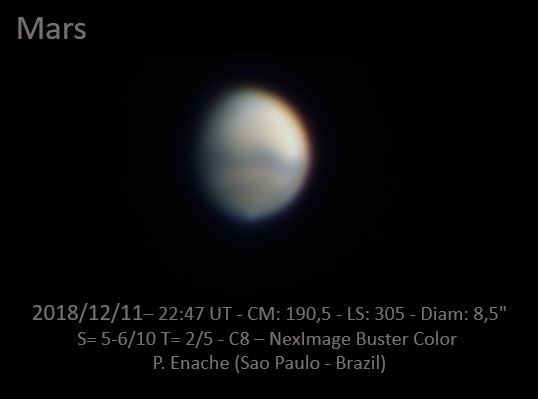 [Pericles Enache,Sao Paulo,Brazil]
[Pericles Enache,Sao Paulo,Brazil]
The planet is now receding from Earth with an apparent diameter of about 8.7"- seeing was fair and a number of interesting details were visible on the disk:
- The SPC was quite brilliant and there seemed to be bright clouds present in Mare Australe
- The limb was very bright along with the Amazonis region.
- Solis Lacus on the preceding limb,now lacking in fine details due to the small apparent diameter of Mars.
- Pandora Fretum and Mare Sirenum fairly easy to see.
- A vague streak present to the north.
I had hoped to observe comet Wirtanen,but by the time the comet had cleared to low down mist the clouds came in and I was unable to see it.
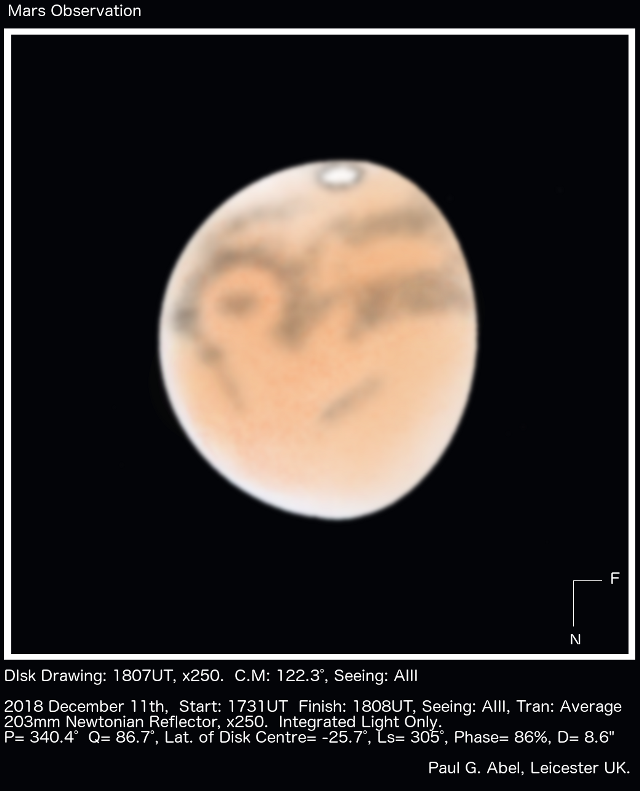 [Paul G. Abel:Leicester:United Kingdom]
[Paul G. Abel:Leicester:United Kingdom]
The seeing turned out to be good,but that didn't seem particularly apparent at the time,as the image was fairly lively.
The S. Polar cap was easily visible on live preview though.
The three large shield volcanoes are visible,and Olympus Mons can just be seen emerging from the terminator.
There are hints of some of the linear features on the surface too.
Just out of curiosity I made a composite using old images from 'Viking'......via the Mars tab on Google Earth!
It was the most similar 3D view I could find.
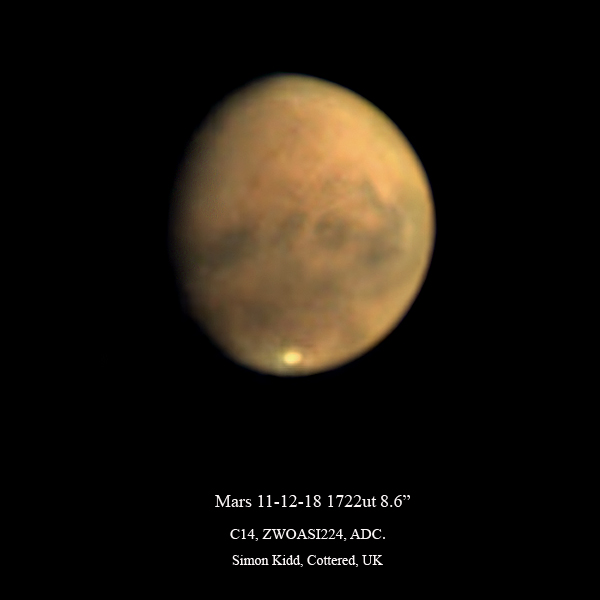
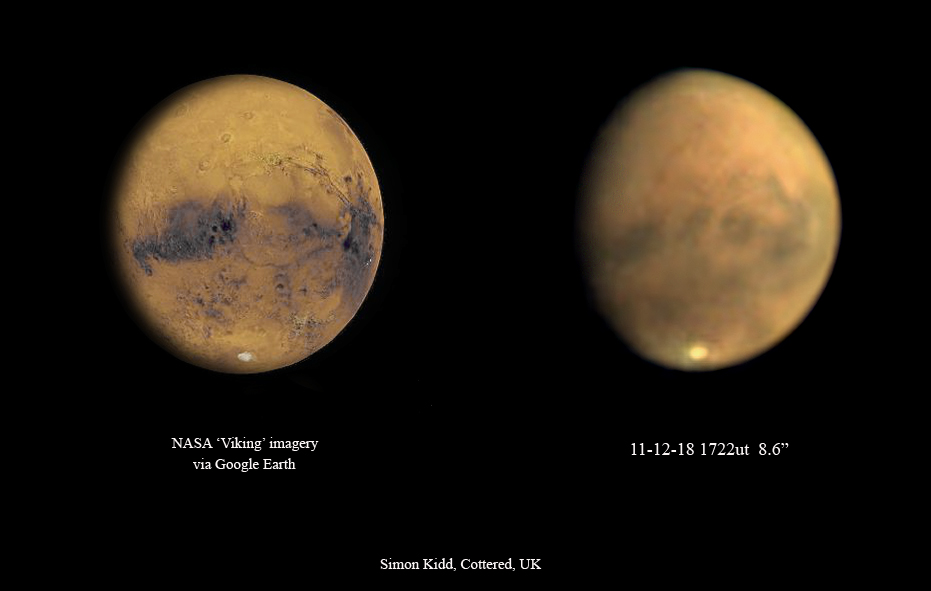 [Simon Kidd: Welwyn Herts,United Kingdom]
[Simon Kidd: Welwyn Herts,United Kingdom]
In poor seeing.
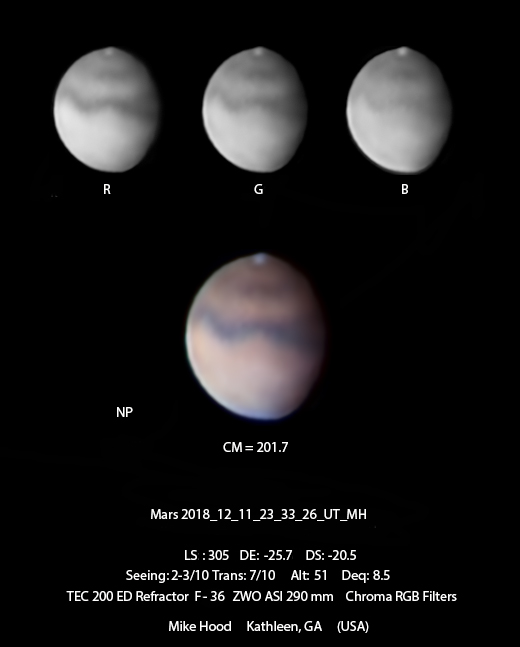 [Mike Hood : Kathleen Georgia,U.S.A.]
[Mike Hood : Kathleen Georgia,U.S.A.]


[Clyde Foster:Centurion,South Africa]
[Pericles Enache,Sao Paulo,Brazil]
[Paul G. Abel:Leicester:United Kingdom]

[Simon Kidd: Welwyn Herts,United Kingdom]
[Mike Hood : Kathleen Georgia,U.S.A.]
 ALPO-Japan Latest
ALPO-Japan Latest

 Mars Section
Mars Section